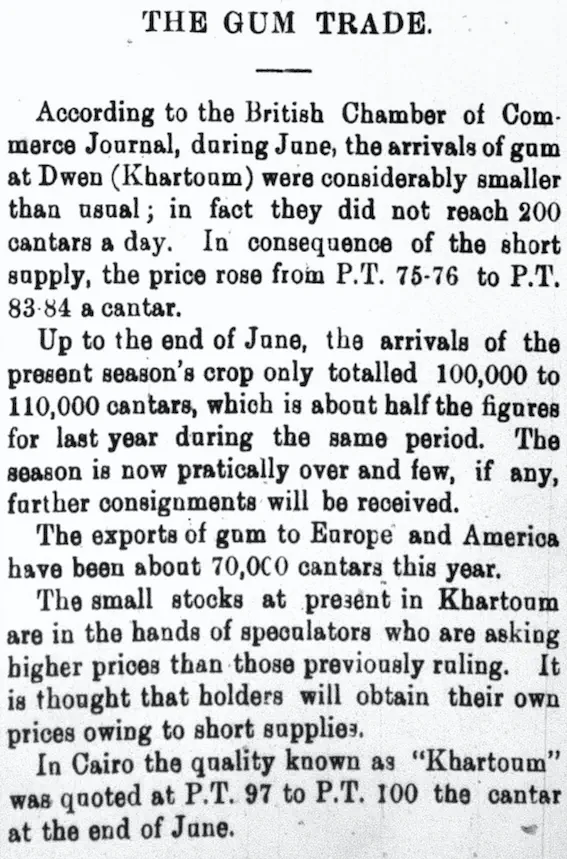The Gum Trade
 Gum of today
Gum of todayGum in 1906
For something I use every day I hardly think about the origins of it. I never considered the history of gum, but when I saw the article about the gum trade on Wednesday July 11th 1906 it made me think about how long people have been chewing gum. It’s quite interesting to think about. I am an avid gum chewer, so to think about the people that have been in my position a hundred years ago makes me feel quite small in the grand scheme of things.
Gum Trading?
Apparently Egypt in 1906 was a major distributor of gum. They exported thousands of cantars of gum, for a decent profit, considering they apparently are a major distributor of the product. However, up to the end of June 1906, their crop yield was only half of what it was around that time the year before. This probably ended up being a severe loss in profit, but Egypt had plenty of money from other exports.
What was gum actually used for?
I also began to wonder if gum was actually used for chewing. Could it have been used for other purposes like so many things that existed hundreds of years ago. Was it used to hold something together? Was it used to stop leakages? Maybe it is used just as it is today, just as a way to keep your breath smelling fresh all day, no matter what.
The Answer…
Upon further inspection the use of gum was not at all what it is used for today. I found out that “Arabic Gum” was used primarily as a food stabilizer. However, it was also used in traditional lithography, it was used in printing, paint production, glue and even cosmetics. Obviously this means that Gum in the Egyptian Gazette is not the same as the gum sitting in my pocket in 2017. I discovered that substitutes for chewing gum had been invented since the Ancient Greeks, however that was just tree bark. So, overall, gum as referred to in the Egyptian Gazette is quite different from the gum of today.